
SHOW

SHOW
"As the Earth's condition is receptive devotion, so must a gentleman constantly cultivate his virtue to shoulder the world." —— Record of Dr. Huang Lu's Concert of Chinese and Foreign Art Songs at China Agricultural University
15:38 Nov 26 2024
On May 13th, 2023, the campus of China Agricultural University (CAU) was in full bloom, with dappled shadows from the trees and light from the sky. Soprano Dr. Huang Lu and Artistic Director Zhang Huan's “Chinese and Foreign Art Songs” solo concert came into China Agricultural University (CAU) and presented a wonderful musical performance for the teachers and students of CAU.
China Agricultural University was founded a hundred years ago, the academic style is rigorous, talented people, they plow the land, study the land, research land, “I Ching” said “the earth's momentum Kun, the gentleman to the virtue of carrying things”. The I Ching says, “The earth is powerful, the gentleman carries things with great virtue”, so it is not too much to describe this world-renowned university as “majestic with great virtue”. China Agricultural University can be regarded as a milestone in the popularization of art songs. Here, art song, as a form of vocal music that is reaching out to the masses, has taken root and is ready to spread its branches into the clouds.
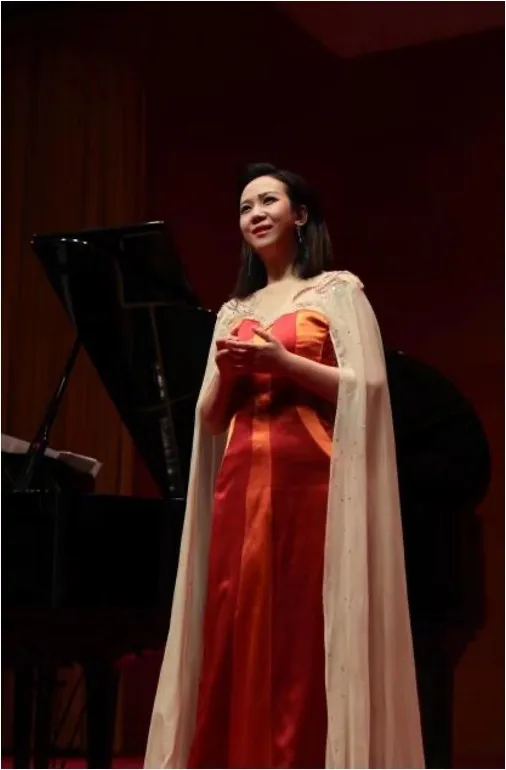
This “Chinese and Foreign Art Songs Concert” features a very representative selection of works sung by Huang Lu. The performance alternated between Chinese and Western styles, different styles were presented in succession, and different cultures were reflected in each other. Together with the guide's live lecture, the audience traveled through the past and present, across the East and the West, and well appreciated the different interests and charms of Chinese and foreign art songs.
The opening song “The Joy of Love” is a sad art song. Composed in 1784, its author, Martini, was a German-born French composer, often mistakenly written as the Italian composer G. Martini, the song was originally written in French and has been translated and sung in many languages. The first verse of the song sings, “The joy of love is fleeting, the pain of love stays with you all your life.” As the years go by, the sorrows and joys of human beings are not different, and the sorrows and joys of love through two hundred years still touched the teachers and students of the University of Agriculture, who gave a warm applause to this piece of work that expresses delicate emotions.
Rest in peace, departed souls” is an art song (also translated as ‘Don't go near the grave’) composed by Verdi. It is taken from his Six Romances. The song is narrated in the voice of the deceased, resenting the fact that he was unloved and neglected during his life, and that he was mourned after his death, so what's the use of all the tears and offerings of flowers? The song is emotionally charged, perfectly presenting the anger of the deceased who is not satisfied with his or her death. All tears, lamentations, and interrogations fade at the end, as if entering the grave, death forces life to reconcile with the world.
At the end of the piece, there is a sustained octave of vibrato in the dominant, slowing down and weakening, and the minor dominant chord ends with three keystrokes. It is as if the spirits of the dead have fallen silent, no longer disturbed, with the green earth as their pillow, sleeping with the green hills, resting in peace forever.
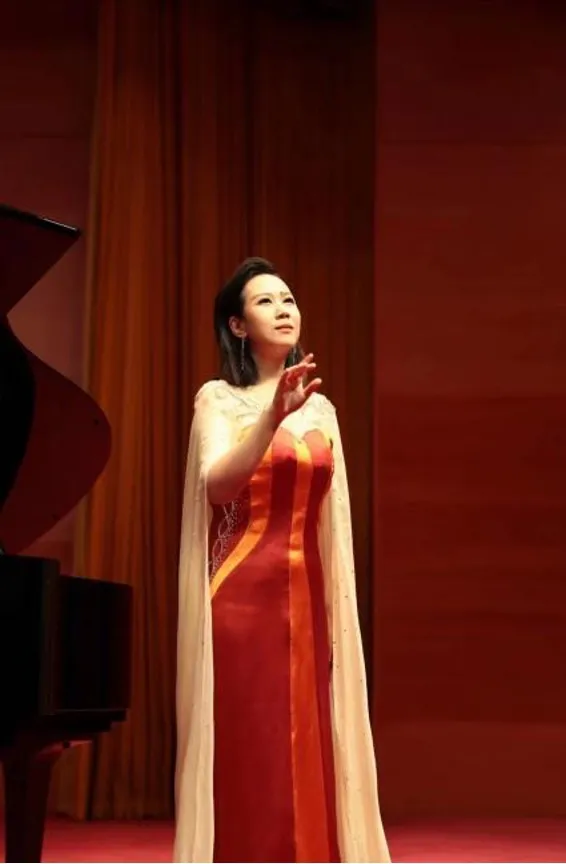
The third song, “Shadow of Apricot Blossom Sky”, begins with a six-degree jump in the “Green Silk Low Flick”, a prelude to the feelings of parting that well up in the heart. This is the Song Dynasty lyricist Jiang Kui's own song, composed more than 800 years ago. The “Songs of the White Stone Taoist” is the only surviving Song dynasty lyric music, and this song “Almond Blossom Sky Shadow” is one of them. The songs were compiled into a five-line score by Yang Yinliu, and are a rare masterpiece. The songs use ancient scales, also embellished with color tones, and the allusions and intentions in the words are woven horizontally and vertically in an intriguing way. The pain of longing and the difficulties of the world are touching.
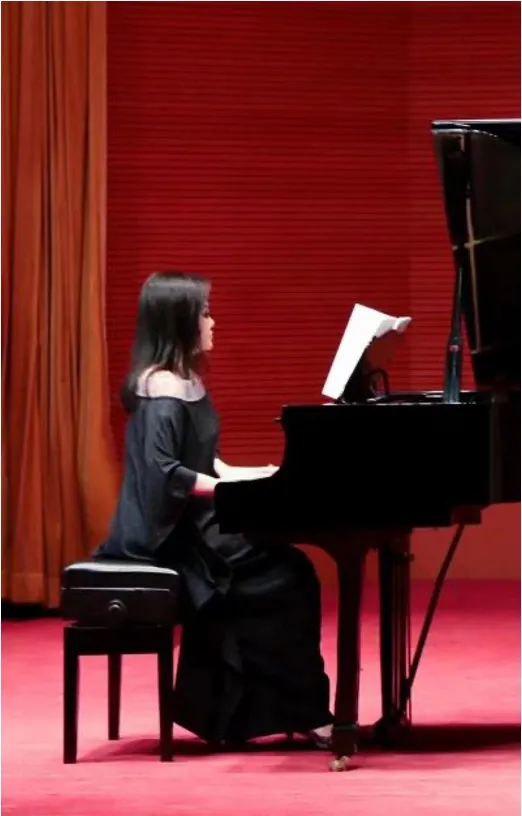
Compared to the 800-year-old “Almond Blossom Sky Shadow,” He Luting's “Flowing Water,” written in 1935, has only one verse. In the 1950s, the author added a verse and renamed it “Clear Stream”. The song begins by depicting a clear stream in front of the door and weeping willows on both sides of the river, leading to the twist and sentiment that the scenery remains the same and time is no more. The melody of “Only the flowing water never returns” is a triplet with homophonic repetitions, with a fourth downward jump and a third upward extension, which expresses the helplessness of the flowing water and the passing of time. The last line, “Please don't take the time away”, has a low to high pitch and a tight to loose rhythm, with a long-lasting meaning. The passing of time is like the passing of time, and it is not a matter of time, but a matter of sighing. The magic of music is to make people empathize across the scale of time, and this song leaves a deep impression on the listener.
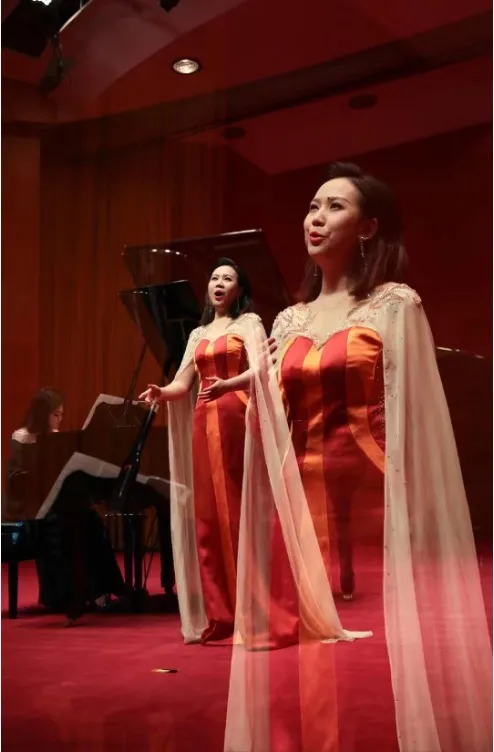
RuMengLing - Often Remembering the Daybreak at the Stream Pavilion is an art song with ancient poems and lyrics. The song adopts the ancient tone scale, the melodic method is swaying, surging and undulating, and the traveling tone is appropriate to the lyrics, which well portrays the young man's outing in a boat, lost on the way back, and mistakenly entered the depths of lotus root flowers. The young man is in a drunken state, and is very happy and relieved. The last line of the lyrics is “Scrambling to get across, scrambling to get across, startling a shoal of gulls and herons.” The crowd was at a loss for words, and the birds flew in unison. The painting style suddenly changes, the music climaxes, the scene is blended, full of dynamics. The song is characterized by kunqu lines, and Huang Lu slightly embellishes her voice to reflect the stylistic characteristics of Chinese art songs.
The Song of Looking to the Countryside is a piece of work about a traveler's longing for his homeland. The word “hometown” refers to the motherland. Separated by a shallow strait, “the mainland is not visible”, so the gods are haunted by dreams, the heart's direction, the love of the system, the soul's return. The lyrics are sincere and deep, calling out and shouting, strongly expressing the feelings of longing for the mainland. The song sings three sighs, vivid image, strong sense of substitution, the nostalgia of resentment, the pain of the national tragedy, the performance of the best, into the wood. The song is so touching that it makes one's heart sink.
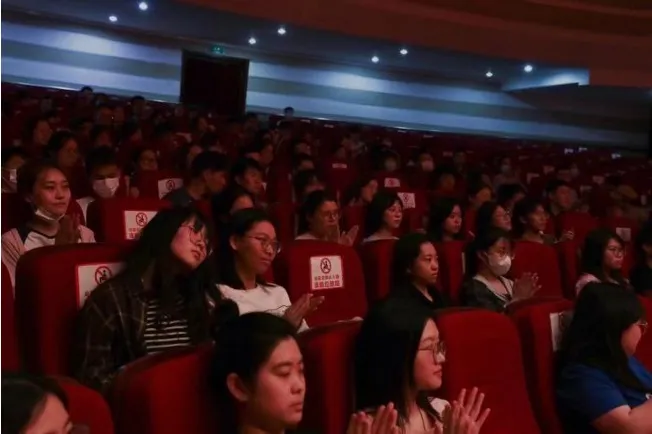
Prayer is Futile is an art song written in 1907 by the Italian composer Tosti. Tosti wrote a suite containing four songs for the lyricist, expressing themes of love, life and religious redemption. This song is the third in the suite. The full song has four song sections in a two-part style. The four verses of the song are like a sob, and fear makes one devout, but the gods do not respond, leaving only the darkness of despair to envelop life. The last line sings “Daffodils are the flowers of the world” and ends in a major key. This line does not imply hope, but more despair. The ancient Greeks used the daffodil to symbolize the food of the underworld, and the daffodil as a metaphor for leaving the gods in the earthly realm, where there is no more life, no more death.
The following song, “Sorrow” (also translated as “Lament”), was also composed by Tosti. The first two stanzas of the song are a picaresque song of sadness. Though darkness shrouds the sky and the sea, and the eyes of tears are hazy. But the lover is steadfast, and the two lean on each other and pray together. The gentle night, the shining star, is the witness of love. Though life is short and all good things will pass away, love is real and soothes the hearts of lovers!
Chinese and Foreign Art Song Concert 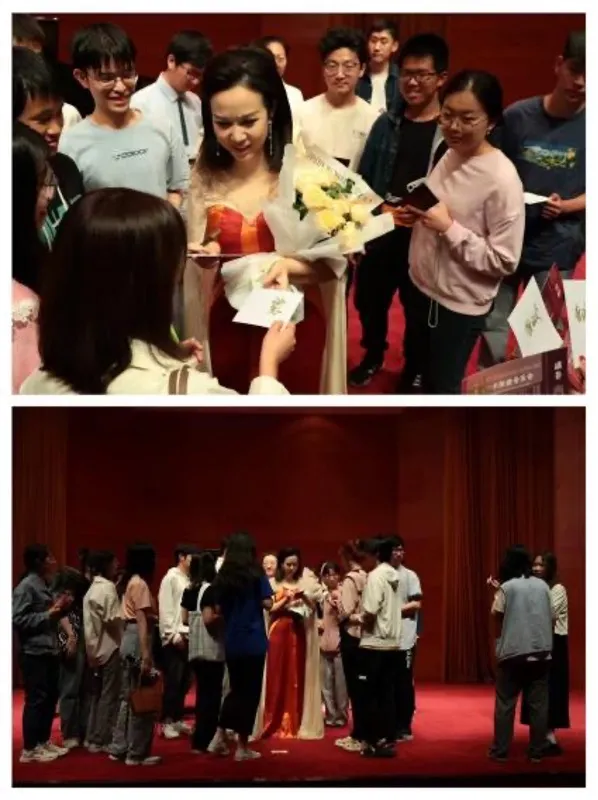
The Song of the Yue People is adapted from a pre-Qin folk song. A prince of Chu met and got to know a commoner of Yue when he was on a boat trip. The commoner had a crush on the prince and sang the “Song of the Yue People” to express his feelings and love. The poem has been passed down through the ages. This art song reproduces this famous poem. Huang Lu sang the version composed by Liu Qing. “What's the date of this evening? Drifting downstream in a boat.” The song adopts the folk ballad style, simple and friendly, and tells the story. The melody, in four lines, tells the story of a commoner and a prince meeting and sprouting a love affair. The chorus is the core phrase of the whole song - “The mountain has wood and the tree has branches, the heart pleases the king and the king doesn't know.” The picaresque structure is stirring; the melody jumps in octaves, stirring up and down. “The heart is happy with the gentleman and you don't know it” is repeated three times, singing three sighs at once, and sending the beautiful feelings with deep emotion. Though you can't get there, your heart yearns for it. The whole melody is in five notes only, but the piano accompaniment has the supporting voice, chord embellishment and functional advancement, which deepens the expressive power of the melody.
Jiangchengzi - Recording a Dream on the Night of the Twentieth Day of the First Month in the Yimao Year is one of Su Shi's famous eulogies for his deceased wife and his life, which has been passed down through the ages. Ao Changqun's colorful music and Su Shi's sad lyrics are wonderfully combined, perfectly presenting the qualities of a high-quality art song. Huang Lu's singing reveals sadness and grief, poignant and sincere, touching to the core. The flowing weave and rich harmonies exude a rich ethnic character without losing its modern flavor. The work has an eternal artistic charm that transcends time and space, life and death. The song is like a dream, releasing the dream and releasing feelings, dreaming back to the past to see relatives.
The Hairpin Phoenix” is an ancient poetry art song, novel and chic, heart-stopping, as a new work of rare. The song is in the form of a sectional song, with the same words in the upper and lower queues. At the beginning, the prelude introduces the lyrics with a rapid stream of sounds. “Red crispy hands, yellow cord wine, full of spring color palace wall willow.” The tune is in a harmonic minor key, with a continuous variety of legato and decorative melodic drags, together with a flowing accompaniment weave and dissonant chords, creating a sad tone. The upper quatrain expresses the hopelessness of meeting each other, the beauty is no longer there, and the dislike of the sky and the time is unbearable. The music is a single breath, and at the end, “Wrong, wrong, wrong.” The music is powerful and expresses remorse, remorse and shame. At the end of the next line, “Mo, Mo, Mo.” The sound of the three words is slightly different from that of the previous que, adding depression, helplessness and sighs of grief. Things are different, the oath is still there, Jinwenwen letter is difficult to deliver, so I have to stop. Such a singing three sighs, ice and charcoal to put intestines, saddening sighs and pondering. Su Shi and his wife before the “death” of the pain, after Lu You and Tang Wan “life” of the pain. Similar to the two feelings, very different from the two songs, Huang Lu's handling of the ease of use, easy to use.
The lyrics of “Nian Nujiao - Red Cliff and Ancient Times” are so famous that no one knows it, and there have been many versions of the song circulating. This song is newly sung and attracts attention as an art song. The melody is in five notes only. Pentatonic melodic method, flow and change, through the smooth, staccato. The three parts are clear and varied, exuding a national and contemporary flavor. The chorus climaxes with. “The old country is traveling, the sentimental should laugh at me, early flower hair, life is like a dream, a libation of the river and the moon.” These lines were originally nostalgic for the past and present, self-deprecating sighs, but the composer was endowed with the spirit of the times, more free and open, bold and generous. The entire piece is lyrical, clear and expansive, and consistent, integrating personal emotions into the grand narrative of history.
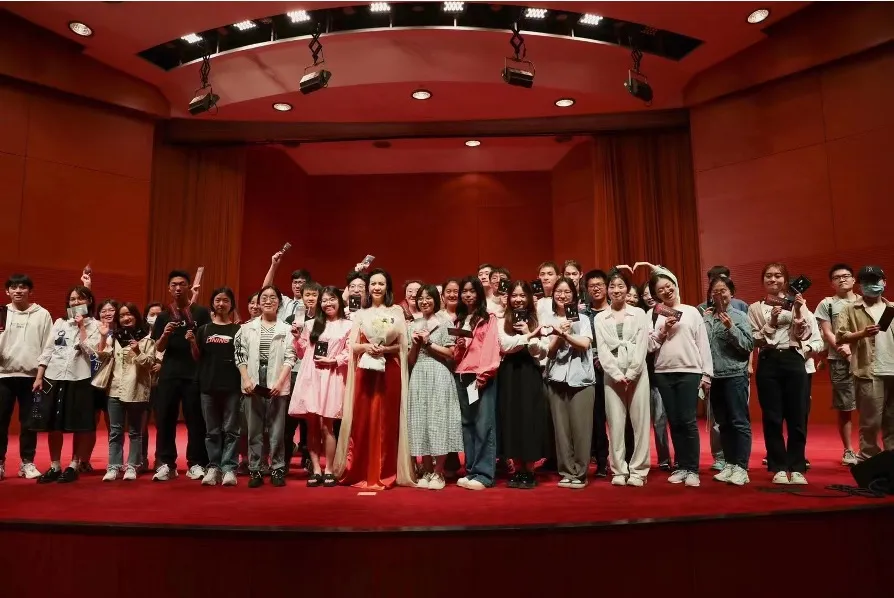
Art songs have been developed in China for more than a hundred years, and they have Chinese characteristics and styles from creation to singing. From the point of view of singing style, Chinese art songs, on the one hand, are a historical choice from single American singing style to the diversity of various singing styles, and on the other hand, they are a teaching requirement from original singing style to national singing style, and then to the unity of Chinese vocal music. This two-way path of diversity and unity provides a practical basis and theoretical summary for the singing of Chinese art songs.
Huang Lu sings foreign works in the original language, adopting the American singing style, and strives to reproduce the original quality, specifications and singing style of foreign art songs. As for singing Chinese art songs, she insists on combining Chinese and Western styles, integrating the American singing method with Chinese vocal language and musical style, showing the contemporary nature of Chinese vocal music and expanding the Chinese characteristics of vocal art. She tries in the comparison of Chinese and Western, thinks in the feedback of the performance, and keeps refining and perfecting, not only showing the artistic charm of the classics of Chinese and foreign art songs, but also providing a new topic of singing method and style for Chinese vocal music, which has aroused widespread attention and academic discussion.
Since 2018, soprano Huang Lu has been performing solo concerts in major theaters and colleges and universities across the country, dedicated to combining music heritage with educational practice, promoting the spirit of Chinese aesthetic education, aiming to improve listeners' art appreciation and humanistic literacy, and integrating education into daily art appreciation. During the tour, the audience gave enthusiastic feedback, hoping to gain an in-depth and systematic understanding of this art form. This means that the promotion of art song should not only present the best contemporary works, but also go back to the roots of the art form and introduce its development in the West. There are significant historical, regional, and ethnic differences between the various types of works, which need to be introduced and extended with introductory lyrics. The concert selection should take into account the different periods of Chinese and Western art song works. At the same time, many listeners wanted to be exposed to the art song content after the concerts, so the project was continuously updated with short videos. After several years of accumulation, the number of listeners continues to grow, the scope of influence continues to expand, and the top-level design continues to improve. In order to make more art songs accessible to the general public, starting from the academic field, the Chinese Art Song Project has been promoted by integrating universities and industries, organizing national seminars and academic exchange activities, and carrying out a variety of activities in a multi-dimensional, all-encompassing, and multi-level manner across the country.
The original was published on China Agricultural University
The original link is as follows::https://mp.weixin.qq.com/s/jGMNjNNBkKAr4Yf0TPVDIA

